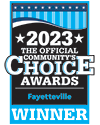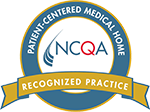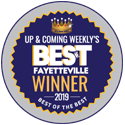Lice 101 – What Parents Need to Know for Safely Finding and Treating Lice
No parent wants to learn their child has lice. It can happen to anyone regardless of their economic standing. Lice do not pick and choose the heads on which they appear based on who is clean or who is dirty. While the school year is a common time for lice infestations to occur, the summer is also prime time. Sleepovers and summer camp provide perfect opportunities for lice to become a problem.
What Are Lice?
Lice are tiny bugs that are about the size of a sesame seed. They live approximately 28 days and develop in three stages.
- Egg or Nit – The oval eggs hatch in 6 to 9 days and are located 4 to 6 millimeters from the scalp. They attach to the hair shaft and appear yellow or white in color.
- Nymph – Similar but smaller in appearance to an adult louse (singular for lice), this stage lasts for 12-14 days.
- Adult – Adult lice multiply fast as one adult louse can lay up to 10 eggs per day.
How to Tell if My Child Has Lice?
While an itchy head is an indication of lice, itchiness does not typically occur until 4 to 6 weeks after lice appear on the scalp. A reaction to the lice saliva causes the itchiness. The best way to check for lice is with a visual inspection. Nits (eggs) are most easily seen at the hairline and behind the ears. Nits attach themselves to the hair and are not loose on the scalp, as would be with dirt or dandruff. Live lice are difficult to find as they avoid light and move very fast. Check your child’s entire head going from section to section using a fine tooth comb.
How to Treat Lice?
If your child has lice, there are a variety of treatments available, some more useful than others. Home remedies such as petroleum jelly, mayonnaise or olive oil are not proven to be effective in killing lice and should be avoided. Never use dangerous products such as gasoline or place a plastic bag on a child’s head during treatment.
Some lice treatments can be purchased without a prescription, however many popular brands only kill live lice and do not kill the eggs. Regardless of the treatment you choose, consult your child’s pediatrician before you administer any treatment. Thoroughly check and treat everyone in the home for lice. All bed sheets, towels, clothes or hats should be washed in hot water and dried on high heat if used within two days of discovering lice.
Here is a breakdown of popular lice medications provided courtesy of the American Academy of Pediatrics. The FDA has approved the treatments listed below.
| Treatment | Description |
| Permethrin (Nix) |
· Available without a prescription. · Kills lice, does not kill eggs. · Apply to shampooed and towel dried hair; then rinse after 10 minutes. · Retreatment recommended in 9-10 days if you see live lice. · Approved for use in children two months and older. |
| Pyrethrin-based (RID, A-200, Pronto, R&C, Triple X, Licide) |
· Available without a prescription. · Kills lice, does not kill eggs. · Apply to dry hair and rinse after 10 minutes. · Retreatment recommended in 9-10 days if you see live lice. · Approved for use in children two years and older. Should not be used in people who are allergic to chrysanthemums. |
| Malathion lotion (Ovide) |
· Prescription required. · Kills lice and lice eggs. · Apply to dry hair and rinse after 8-12 hours. · Second treatment recommended in 7-9 days if you see live lice. · Approved for use in children six years and older. Not recommended for children under 24 months. · Flammable – may cause chemical burns. |
| Benzyl alcohol lotion (Ulesfia lotion) |
· Prescription required. · Kills lice but does not kill eggs · Apply to dry hair and rinse after 10 minutes. Repeat in 9-10 days. · Contains no neurotoxic pesticide. · Approved for use in infants and children six months and older. Not recommended for children under six months. |
| Spinosad topical suspension (Natroba) |
· Prescription required. · Kills lice and eggs. · Apply to dry hair and rinse after 10 minutes. · Second treatment recommended in 7 days if you see live lice. · Approved for use in infants and children six months and older. Not recommended for children under six months. |
| Ivermectin lotion (Sklice) |
· Prescription required. · Does not kill lice eggs, however, may prevent newly hatched lice from living. · Apply to dry hair and rinse after 10 minutes. · Only one application required. · Approved for use on infants and children six months and older. Not recommended for children under six months. |
If your child has lice, please schedule an appointment with one of our pediatric providers today. By acting fast, you will minimize the chance that the rest of the family will end up getting lice.








